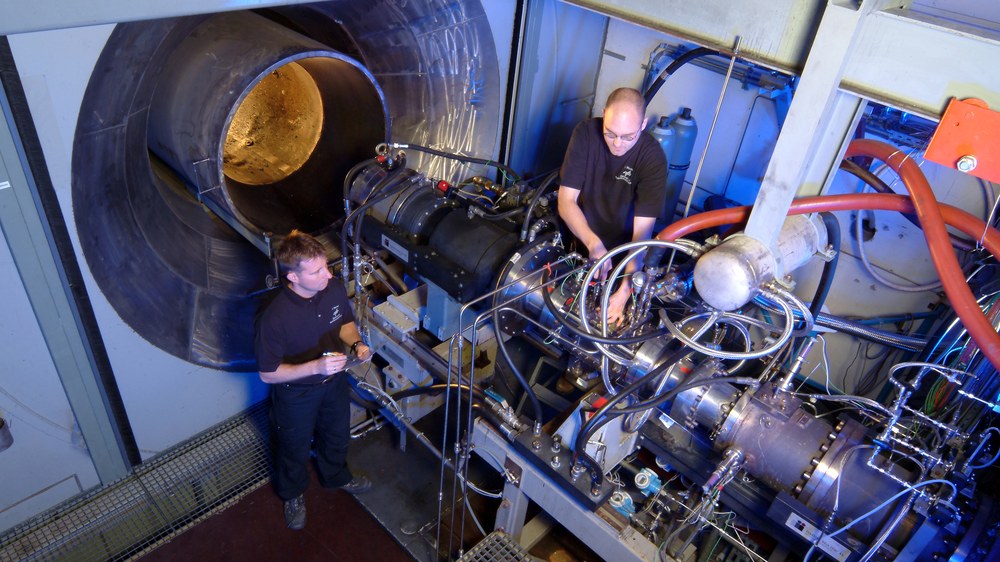The High-Pressure-Cooling-Rig was developed to investigate the cooling effectiveness of metallic and ceramic combustor wall elements. The test section fits into the HBK 3 test rig and allows the characterization of test objects with original size and under realistic combustor conditions. A combustion chamber is used to produce hot gas at elevated pressures with the typical swirl, turbulence and velocity profile of real combustion chambers. The hot gas is guided into the test section where the test object, e.g. combustor wall element, is placed. The test object is cooled with pre-heated air to create a realistic cooling profile. Thermocouples and heat flux sensors are used to monitor the temperature and cooling effectiveness of the wall element. To determine a two-dimensional temperature distribution of the test object, an infra-red camera can be installed. Optical access to four sides is granted through high pressure windows in the test section. At different test conditions the influence on the temperature distribution of the wall element is measured and the cooling effectiveness is determined.
Especially lean burn combustors tend to develop thermoacoustic oscillations. The resulting pressure fluctuations impede the cooling effectiveness and reduce the lifetime of combustor parts. To analyse this influence the test rig can also be operated with self-excited pressure oscillations. An additional pressure casing can house tubular combustor cans. In this configuration the test rig is used to investigate prototype combustors made from ceramic matrix composites.
Characteristics
Optical access to hot gas channel from four sides
Three-axis traverse for measurement technique
Research Topics
Development of cooling concepts
Characterization of cooling effectiveness of metallic and ceramic combustor wall elements at realistic operating conditions
Cooling properties under steady-state conditions and under the influence of pressure oscillations
Measurement Technology
2D Laser-Doppler-Anemometry
High speed infrared camera
Unsteady heat flux sensors
Transient pressure transducer
Tecnical Data
Static pressure | 5..20 bar |
Hot gas temperature | 1500..1800 K |
Hot gas velocity | 20..40 m/s |
Cooling air temperature of test object | 300..700 K |
Dimensions of test object | 80 x 100 mm² |

